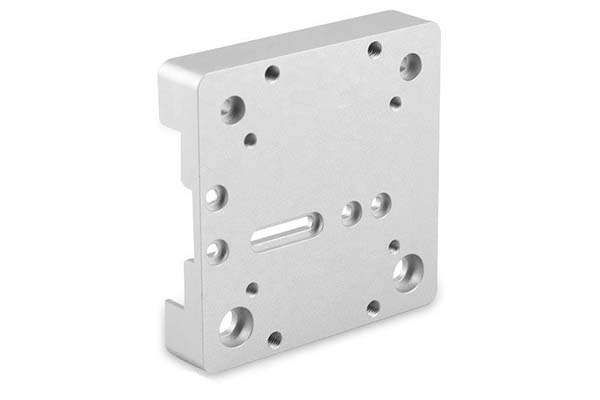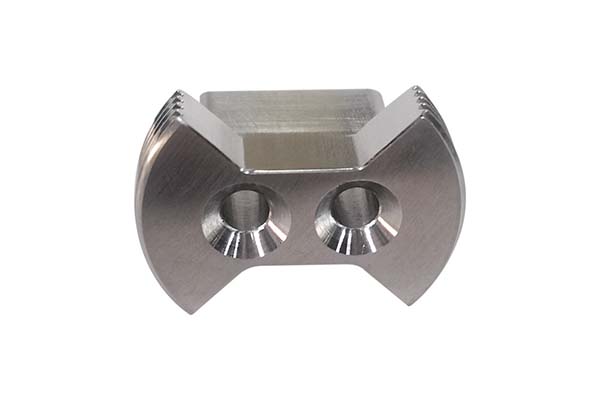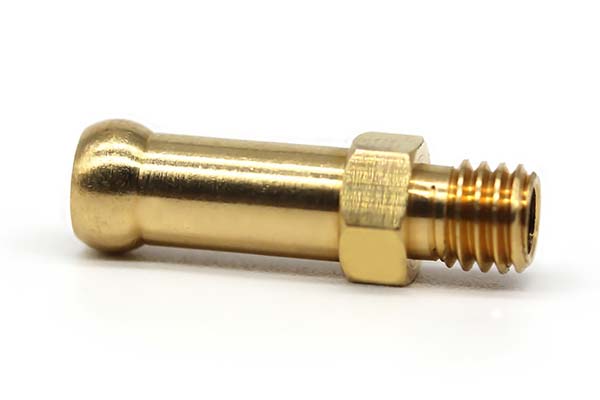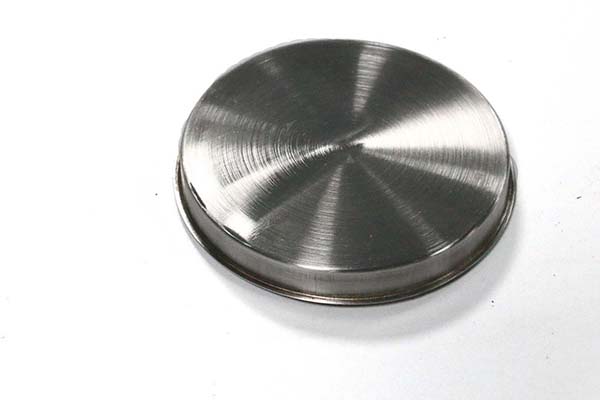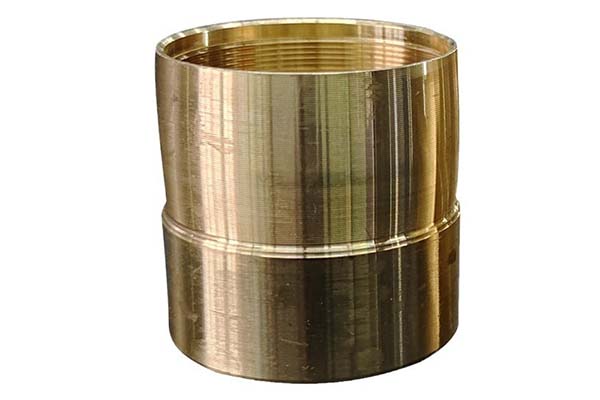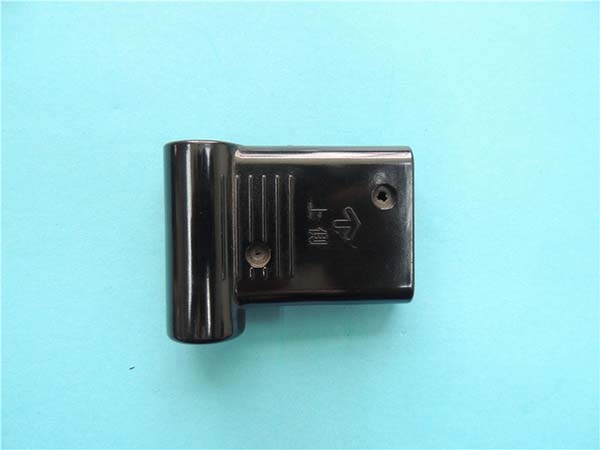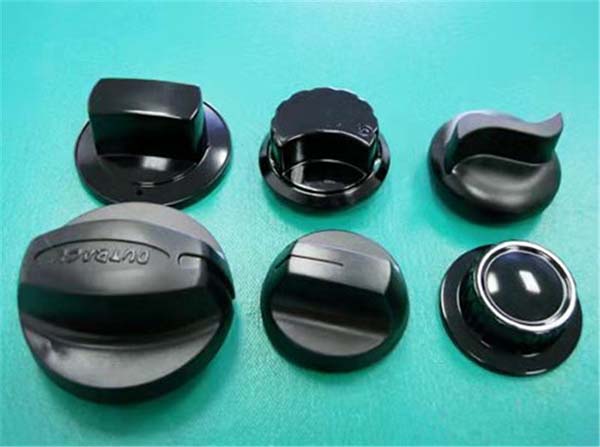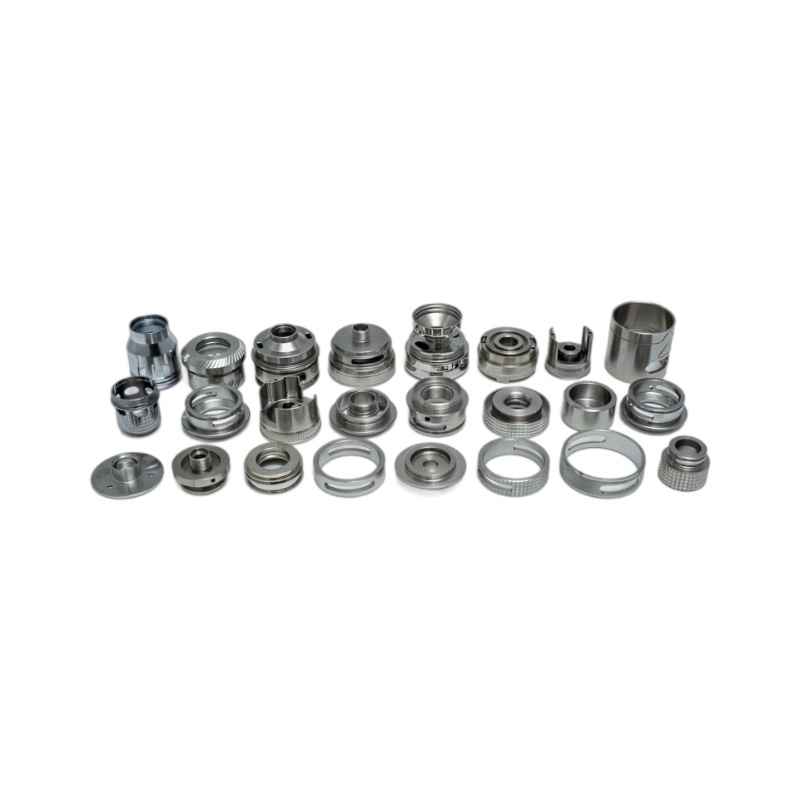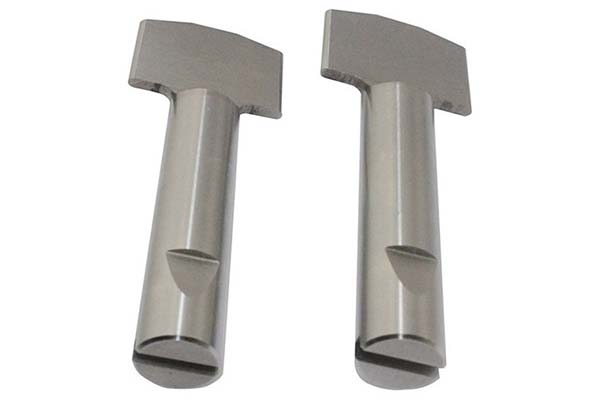40Cr steel is a widely used chromium-alloy medium-carbon steel valued for its excellent combination of strength, toughness, and wear resistance, but machining it presents unique challenges. Manufacturers often struggle with its increased tool wear compared to plain carbon steels due to its chromium content, which enhances hardness and creates abrasive particles during cutting. Achieving consistent dimensional stability after heat treatment is another pain point, as improper quench and temper cycles can lead to distortion, critical for precision components like automotive shafts. Additionally, selecting the right CNC machining parameters to balance its machinability in the annealed state and its hardness after heat treatment requires careful consideration. This guide addresses these challenges, providing actionable strategies to optimize CNC machining 40Cr Steel for durability, accuracy, and reliability across industrial applications.
Material Characteristics & Alloy Overview
40Cr steel is a chromium-alloy medium-carbon steel engineered for superior hardenability and mechanical properties:
- 40Cr composition: Contains 0.37-0.44% carbon (with a typical 0.40% C content), 0.80-1.10% chromium, 0.50-0.80% manganese, 0.17-0.37% silicon, ≤0.035% phosphorus, and ≤0.035% sulfur. As a Cr-alloy medium-carbon steel, it offers better hardenability and wear resistance than plain carbon steels like 1045.
- Key mechanical properties:
- Tensile strength 40Cr: 650-850 MPa (94,000-123,000 psi) in the normalized state; 900-1100 MPa after quenching and tempering, providing excellent load-bearing capacity.
- Yield strength 40Cr: 400-550 MPa (58,000-79,800 psi) normalized, increasing to 750-900 MPa after heat treatment, ensuring resistance to deformation under high stress.
- Hardness range 40Cr: 180-230 HB normalized; 200-250 HB annealed; 280-350 HB (30-38 HRC) after quenching and tempering, with surface hardness reaching 50-55 HRC via induction hardening.
- Machinability rating: Good, rated at 65-70% relative to 1215 steel, slightly lower than 1045 due to chromium content. Improves in the annealed state (200-250 HB) with reduced tool wear.
- Weldability 40Cr: Moderate—requires preheating to 250-350°C and post-weld annealing at 600-650°C to prevent cracking, making it suitable for non-critical welded components.
- Comparison 5140 vs 40Cr: 5140 (AISI) has similar composition but slightly higher chromium (0.70-0.90%), offering comparable properties. 40Cr is more cost-effective in Asian markets, while 5140 dominates in North America.
These characteristics make 40Cr steel ideal for shafts, gears, and structural components requiring high strength, wear resistance, and moderate toughness.
CNC Machining Parameters & Techniques
Optimal Parameters for Efficiency and Precision
- Cutting speed 40Cr steel:
- Milling: 90-140 m/min with carbide inserts; 50-80 m/min with HSS tools. Reduce by 15-20% for heat-treated 40Cr (30+ HRC) to minimize tool wear.
- Turning: 110-170 m/min for roughing (carbide); 70-110 m/min for finishing to achieve Ra 1.6-3.2 μm surface roughness.
- Feed rate for 40Cr:
- Milling: 0.09-0.18 mm/tooth for carbide endmills; 0.04-0.12 mm/tooth for HSS tools. Light feeds (0.08-0.10 mm/tooth) reduce work hardening in heat-treated material.
- Turning: 0.14-0.28 mm/rev for roughing; 0.07-0.14 mm/rev for finishing, balancing material removal and surface quality.
- Depth of cut optimization: 2-4 mm for roughing to maximize efficiency; 0.3-0.8 mm for finishing to achieve tight tolerances (±0.01 mm).
- Carbide insert grades 40Cr: ISO P30-P40 grades (e.g., CNMG 120408) with TiAlN or AlTiN coatings offer optimal wear resistance. For interrupted cuts, use tough grades (ISO P40) with edge hones (0.03-0.05 mm).
- Trochoidal milling 40Cr: Reduces tool engagement time by 40% compared to conventional milling, minimizing heat buildup and extending tool life by 25-30% in deep cavities.
- Coolant selection Cr-alloy steel: Soluble oil (6-10% concentration) or semi-synthetic coolant reduces friction and prevents BUE. High-pressure coolant (40-60 bar) improves chip evacuation in deep holes, critical for hydraulic cylinder rod machining.
Heat Treatment & Distortion Control
Processes to Enhance Performance and Stability
- Quench and temper 40Cr: Heat to 830-860°C, quench in oil, then temper at 200-600°C. Achieves:
- 30-35 HRC (280-320 HB) for balanced strength and toughness (e.g., automotive shafts).
- 38-45 HRC (320-380 HB) for high wear resistance (e.g., gearbox gears).
- Induction hardening 40Cr: Localized surface hardening to 50-55 HRC while keeping cores tough (30-35 HRC), ideal for bearing journals and gear teeth.
- Normalizing temperature: 850-900°C, air cool to refine grain structure, reducing machining inconsistencies in hot-rolled material. Improves tensile strength by 5-8% compared to as-rolled state.
- Tempering chart 40Cr: Tempering at 200°C yields 45 HRC; 300°C yields 40 HRC; 500°C yields 30 HRC, with corresponding reductions in tensile strength and increases in toughness.
- Stress relieving after machining: Heat to 600-650°C for 1-2 hours, slow cool to reduce residual stresses by 60-70%, preventing distortion in precision parts like motorcycle crankshafts.
- Distortion control heat treatment: Use quenching fixtures, slow heating/cooling rates (≤100°C/hour), and uniform oil agitation to minimize warpage. For complex parts, allow 0.15-0.25 mm machining allowance post-heat treatment.
Tooling & Coating Solutions
Selecting Tools for Optimal Performance
- Coated carbide inserts 40Cr: TiAlN or AlTiN coatings reduce friction and extend tool life by 35-45% compared to uncoated inserts, critical for high-volume production of shafts and gears.
- PVD TiAlN coating 40Cr: Maintains sharp edges at high speeds (110-140 m/min), improving surface finish in finishing operations—Ra 1.6 μm achievable in a single pass.
- CBN finishing hardened 40Cr: Essential for finishing heat-treated 40Cr (50+ HRC), achieving Ra 0.8-1.6 μm with minimal tool wear, ideal for bearing surfaces.
- Variable helix endmills: Reduce chatter by 50-60% compared to straight helix tools, improving surface quality in thin-wall sections (e.g., hydraulic cylinder rods with 2-3 mm wall thickness).
- Toolholder rigidity medium-carbon alloy: Shrink-fit or hydraulic toolholders minimize runout (≤0.008 mm), ensuring consistent cutting parameters and preventing edge chipping in interrupted cuts.
Surface Finish & Post-Machining
Achieving Precision and Quality
- Surface roughness 40Cr CNC: Annealed 40Cr achieves Ra 1.6-3.2 μm with carbide tools; heat-treated material requires grinding to reach Ra 0.8-1.6 μm for critical surfaces.
- Ra turning 40Cr: Target Ra 1.6 μm for general components, Ra 0.8 μm for sealing surfaces (e.g., hydraulic cylinder rods), achieved with fine feeds (0.07-0.09 mm/rev) and sharp inserts.
- Grinding hardened 40Cr: Use vitrified aluminum oxide wheels (80-120 grit) for rough grinding, 180-240 grit for finish grinding. CBN wheels are preferred for high-volume production, achieving Ra 0.4-0.8 μm with minimal wheel wear.
- Polishing Cr-alloy steel: Follows grinding for decorative or high-precision applications, using diamond pastes (3-6 μm) to reach Ra ≤0.025 μm, suitable for mold bases and precision shafts.
- Chatter marks removal: Light finishing passes (0.05-0.1 mm depth) with sharp carbide inserts or subsequent grinding eliminate chatter marks, critical for fatigue resistance in high-stress components.
Applications & Industry Case Studies
40Cr steel excels in high-strength, wear-resistant components across industries:
- 40Cr automotive shafts: Machined to tight tolerances (±0.01 mm) for transmission systems. A case study showed 40Cr shafts lasting 200,000+ km in passenger cars, outperforming 1045 steel by 25% in durability.
- Hydraulic cylinder rods 40Cr: Induction hardened to 50-55 HRC, ground to Ra 0.4 μm, and chrome-plated for corrosion resistance. Withstand 30,000+ extension cycles (2500 psi) without failure in construction machinery.
- Gearbox gears 40Cr: Heat-treated to 38-42 HRC, CNC hobbed and ground to precise tooth profiles. In industrial gearboxes, 40Cr gears transmitted 150 kW continuously with minimal wear over 10,000+ hours.
- Construction machinery pins: 40Cr pins with 35-40 HRC hardness withstand heavy loads (8000 kg) and articulation, outperforming 1045 pins by 40% in field tests.
- Precision mold bases 40Cr case study: CNC machined mold bases with Ra 0.8 μm surface finish maintained dimensional stability (±0.005 mm) over 100,000+ injection cycles, reducing maintenance costs by 30% compared to cast iron bases.
Yigu Technology’s Perspective
At Yigu Technology, we specialize in CNC machining 40Cr Steel for automotive, hydraulic, and machinery clients. Our data shows AlTiN-coated carbide inserts reduce tool wear by 40% when machining annealed 40Cr at 110-140 m/min. For thin-wall components, we use variable helix endmills and high-pressure coolant to achieve ±0.01 mm tolerances with minimal chatter. We recommend induction hardening for wear-critical surfaces, with post-treatment grinding to Ra 0.8 μm. Our 5-axis machining centers handle complex parts like motorcycle crankshafts, leveraging 40Cr’s properties for cost-effective production. With ISO 9001 certification, we deliver 40Cr components balancing strength, precision, and affordability for medium-to-high stress applications.
FAQ
- What advantages does 40Cr steel offer over plain carbon steels like 1045?
40Cr steel provides higher tensile strength (900-1100 MPa vs. 750-1000 MPa for 1045) and better wear resistance due to its Cr-alloy content. It offers superior hardenability, allowing uniform heat treatment in thicker sections, making it ideal for high-stress components like gears and shafts.
- What are the optimal CNC machining parameters for 40Cr steel?
Use cutting speeds of 90-140 m/min (carbide) for milling and 110-170 m/min for turning annealed 40Cr. Feed rates of 0.09-0.18 mm/tooth (milling) and 0.14-0.28 mm/rev (turning) balance efficiency and surface quality. For heat-treated 40Cr, reduce speeds by 15-20% and use CBN inserts for finishing.
- How does heat treatment affect 40Cr steel’s performance?
Quench and temper 40Cr achieves 30-45 HRC, balancing strength and toughness. Induction hardening creates a hard surface (50-55 HRC) for wear resistance while keeping cores tough (30-35 HRC). Proper tempering prevents brittleness, ensuring durability in dynamic load applications like crankshafts.
